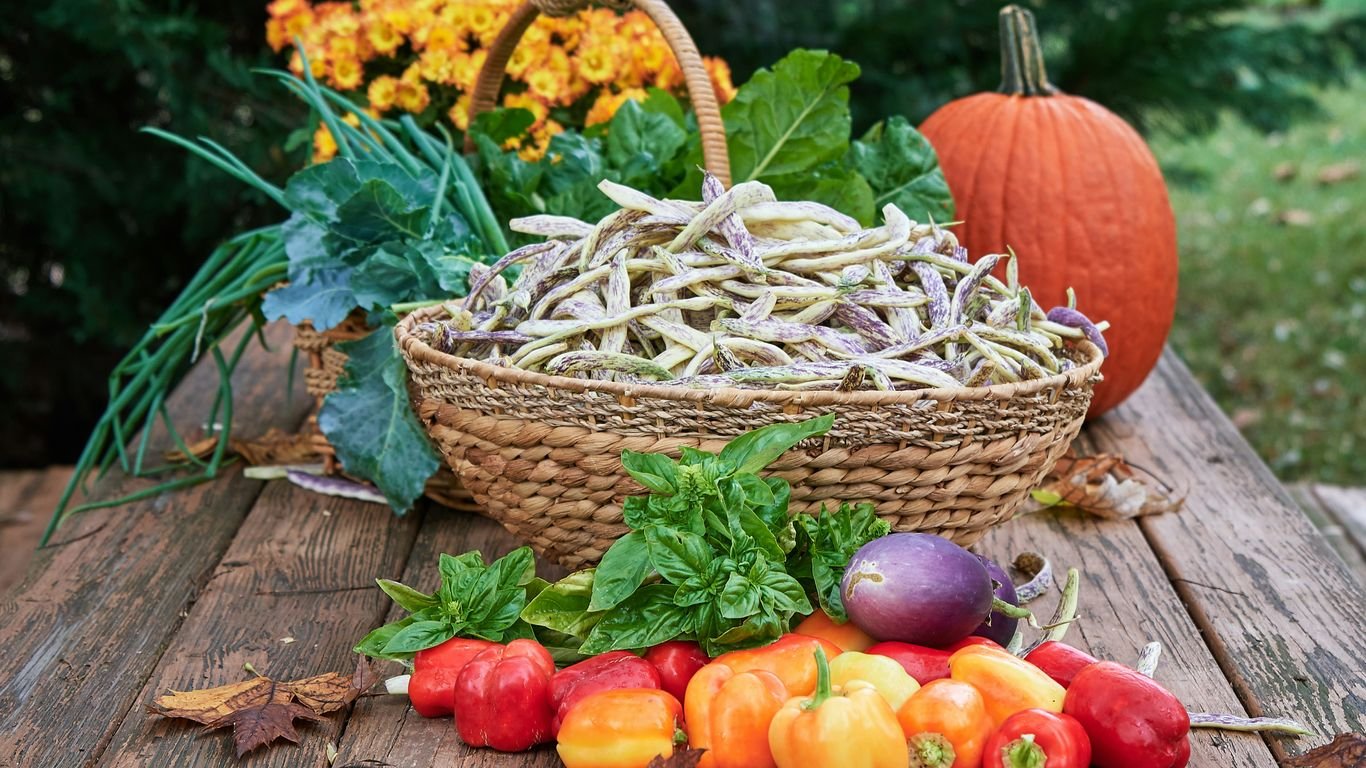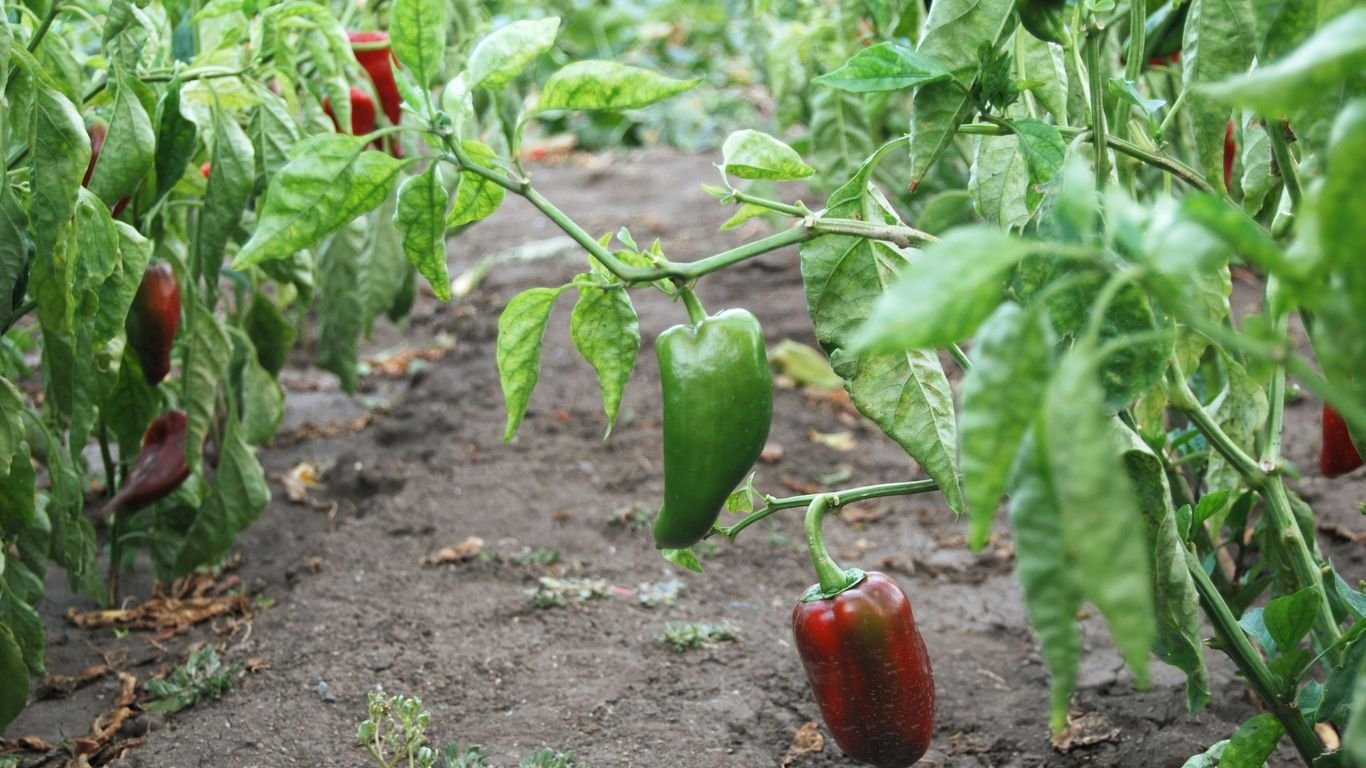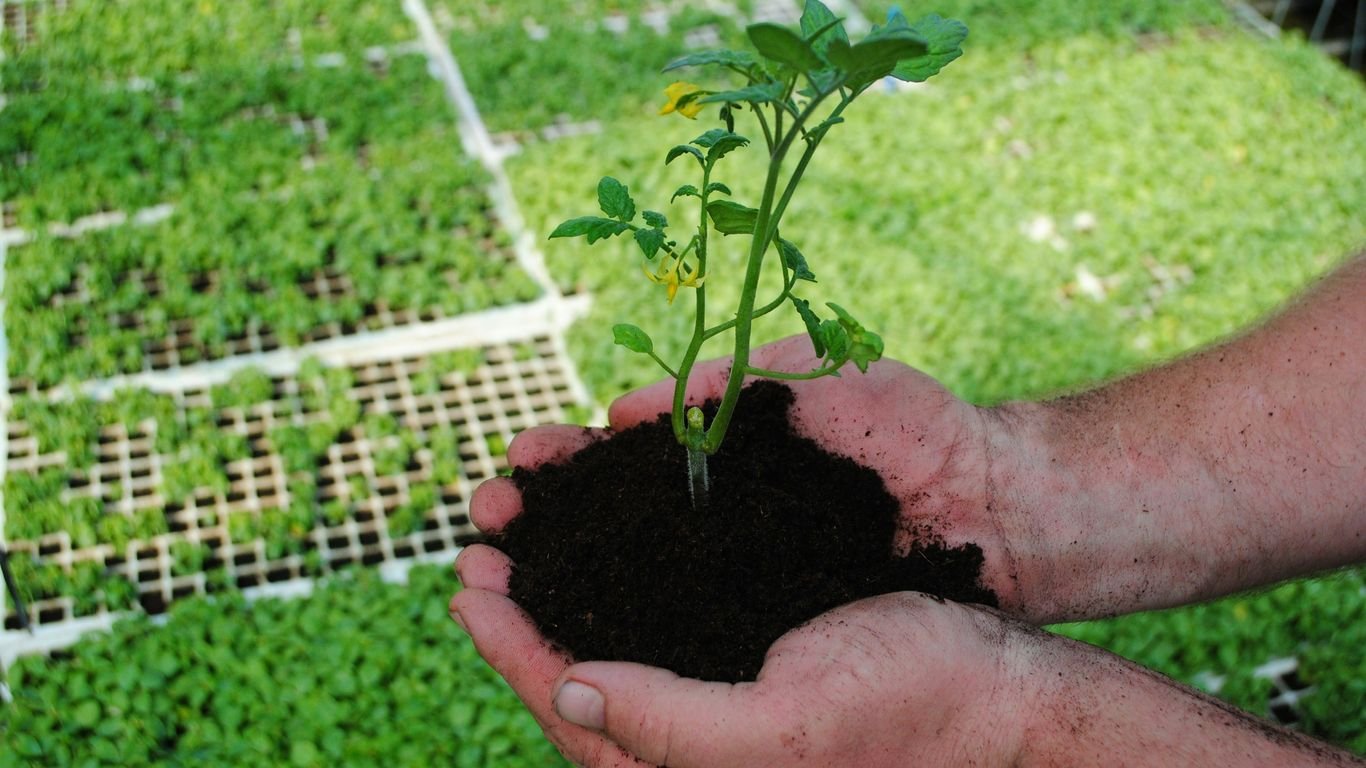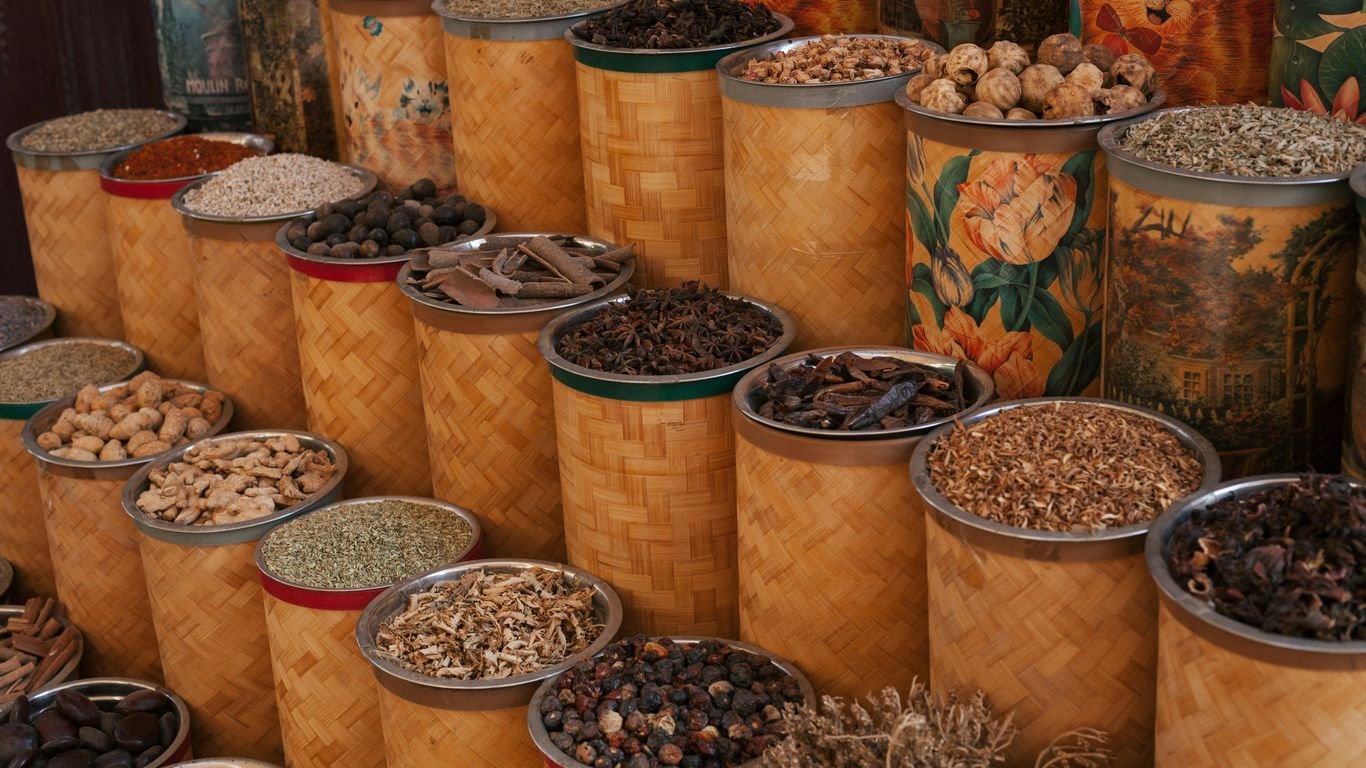Zone 5 Late Fall Planting: Root Vegetables and Overwintering Crops

We’re getting ready to talk about planting in Zone 5 as fall really settles in. It might seem a bit late, but we can actually plant a lot of great things right now that will either give us a late harvest or set us up for an early spring bounty. Think root vegetables that can store through winter and hardy greens that just shrug off the cold. We’ll cover what to plant, when to get it in the ground, and how to make sure it survives until we can enjoy it.
Key Takeaways
- For zone 5 late fall planting, focus on hardy root vegetables like carrots and turnips, and overwintering alliums such as garlic and onions, as these establish well before the deep cold.
- Timing is critical; aim to plant six to eight weeks before your first hard frost to allow plants to develop strong root systems before winter.
- Proper garden preparation, including improving soil drainage and choosing a sunny, protected spot, significantly boosts the success of overwintering crops.
- Protecting your plants with a good layer of mulch or using row covers and cold frames is essential for surviving the winter and ensuring an early spring harvest.
- Beginners should start with easier crops like alliums and root vegetables, as they are forgiving and offer a good chance of success for zone 5 late fall planting.
Choosing Your Zone 5 Late Fall Planting Stars
As the days get shorter and a chill creeps into the air here in Zone 5, we might think it’s time to hang up our gardening gloves. But hold on a minute! Late fall is actually a fantastic time to get some planting done, setting ourselves up for an early harvest next spring or even enjoying some hardy crops right through the colder months. We’re talking about plants that can handle a bit of frost, and some that even taste better after a cold snap. Let’s look at some of the best bets for our late fall garden.
Hardy Greens That Brave The Cold
When we think of fall planting, hardy greens often come to mind first. These leafy wonders are surprisingly tough and can provide us with fresh salads and cooked greens well into the late fall, and sometimes even through a mild winter with a little protection. They’re great because they don’t need a long growing season, and many actually sweeten up after a touch of frost.
- Kale: This is the undisputed champion of cold-hardy greens. We can plant kale seeds or transplants in late summer or early fall for a fall and winter harvest. It can withstand quite a bit of freezing weather, and the flavor often improves with the cold.
- Spinach: While it prefers cooler weather, spinach can be planted in early fall for a late harvest. For overwintering, we’ll want to choose varieties known for their cold tolerance and provide some mulch or cover.
- Swiss Chard: Similar to kale, Swiss chard is pretty resilient. Its colorful stems add a nice visual appeal to the garden, and it keeps producing even as temperatures drop.
- Arugula: This peppery green grows quickly and can be sown in early fall. It might not survive a harsh winter without protection, but it’s perfect for a late autumn harvest.
Root Vegetables For Winter Storage
Root vegetables are another category that really shines in the fall. Many of these can be harvested in late fall and stored in a cool, dark place to last us through the winter months. Planting them in late summer or early fall gives them enough time to mature before the ground freezes solid.
- Carrots: We can sow carrot seeds in late summer for a fall harvest. Varieties that mature in about 60-70 days are ideal. They can be left in the ground under a thick layer of mulch and harvested as needed, or dug up for storage.
- Beets: Similar to carrots, beets can be planted in late summer. They are quite cold-tolerant and can be stored easily after harvesting.
- Radishes: While often thought of as a spring crop, we can plant fall radishes. Some varieties are specifically suited for fall growing and can even be overwintered with protection for a very early spring harvest.
- Parsnips: These are a fantastic choice for fall planting. Parsnips actually develop a sweeter flavor after a frost, so leaving them in the ground until late fall or even early winter is a good strategy. They store well in the ground if mulched properly.
Alliums: The Overwintering All-Stars
When it comes to overwintering crops, alliums like garlic and onions are absolute superstars. Planting them in the fall allows their root systems to establish before winter, giving them a head start for rapid growth in the spring.
- Garlic: This is probably the most popular fall-planted allium. We plant garlic cloves in the fall, typically a few weeks before the ground freezes. It overwinters and is ready for harvest the following summer. Choosing the right variety for our climate is key to success.
- Shallots: Like garlic, shallots can be planted in the fall. They will overwinter and provide a harvest in the spring or early summer.
- Bunching Onions/Scallions: These can be sown in late summer or early fall for a late harvest. Some varieties are hardy enough to overwinter and provide an early spring crop.
These plants are not only delicious but also relatively easy to grow, making them perfect for our late fall planting endeavors. We just need to pay attention to timing and give them a little protection when winter really sets in.
Timing Is Everything For Fall Planting
Getting your fall planting right is all about working backward from the first frost. It sounds simple, but there’s a bit of a dance involved with the weather and what you’re trying to grow. We want our plants to get a good start, build up some strength, and then settle in for the winter, ready to wake up in the spring.
Working Backwards From The First Frost
The general rule of thumb we follow is to plant about six to eight weeks before your area’s first hard freeze. This gives those young plants enough time to get their roots down deep before the ground gets too cold. Think of it like giving them a cozy blanket of soil to snuggle into. This window is key for establishing a strong foundation. We usually check a local frost date calendar and count back from there. It’s not an exact science, as weather can be unpredictable, but it’s our best guide.
When To Sow For Early Spring Harvest
For crops that we want to harvest really early in the spring, like garlic or certain onions, we aim for the earlier side of that six-to-eight-week window, sometimes even a bit earlier. These guys need a longer time to establish themselves over the fall and winter. Planting them in late summer or very early fall gives them the best shot at being robust come springtime. We’re talking late August to early September for these longer-term players.
Planting Closer To Winter’s Chill
Now, for the tougher crops, like hardy greens or some root vegetables, we can push our planting dates a little closer to that first frost. These plants are more forgiving and can even benefit from a little chill. In fact, a light frost can actually make some root vegetables, like carrots and turnips, taste sweeter by converting their starches into sugars. For these, we might be planting in October, sometimes even into early November if the weather holds. It’s a bit of a gamble, but often pays off with a delicious, frost-kissed harvest.
Here’s a rough guide we often use:
- Late Summer (Late August – Early September): Garlic, shallots, walking onions, perennial herbs.
- Early to Mid-Fall (September – Early October): Carrots, radishes, turnips, spinach, winter lettuce, kale, Swiss chard.
- Late Fall (October – Early November): More kale, spinach, and maybe some very hardy root crops if the soil is still workable. This is also prime time for planting flower bulbs that will overwinter.
We’ve learned that paying attention to the specific needs of each plant, combined with a good understanding of our local climate’s typical frost dates, makes all the difference. It’s about giving each crop the best possible start for a successful overwintering and a bountiful spring or late fall harvest.
Preparing Your Garden For Success

Getting our garden ready for the late fall planting and winter ahead is super important. We want to make sure our root veggies and overwintering crops have the best shot at surviving and thriving. It’s not just about sticking them in the ground; we need to think about where they’ll go and how the soil will treat them.
Soil Prep For Winter Resilience
Before we plant anything, we need to give our soil some love. Think of it like tucking your plants into a cozy bed for the winter. We want soil that drains well but also holds enough moisture. Adding compost is always a good idea; it improves the soil structure and feeds the beneficial microbes that will be working away all winter long. We’re aiming for soil that’s loose and crumbly, not compacted. If you have heavy clay soil, mixing in some coarse sand or perlite can really help with drainage. For us, this means getting out there with our shovels and forks, turning over the soil, and working in any amendments we’ve got. The goal is to create a welcoming environment for our fall plantings.
Choosing The Right Spot In Your Yard
Location, location, location! It matters even for our fall garden. We want to pick a spot that gets decent sunlight, even in the shorter days of fall and winter. South-facing areas are usually best because they get the most sun. Also, think about wind protection. A spot that’s a bit sheltered from harsh winter winds will help protect our plants. We also need to consider drainage here. If a certain part of the yard always stays soggy after rain, that’s probably not the best place for root vegetables that can rot if their roots sit in water. We usually walk around the yard, observing where the sun hits at different times of day and where water tends to pool.
Boosting Drainage For Cold Climates
In Zone 5, we know winter can be wet and cold. Poor drainage is a big enemy of overwintering crops. If our soil tends to hold water, we need to take extra steps. One way is to plant on raised beds or mounds. This gives the water somewhere to go. We can also amend the soil heavily with organic matter like compost and aged bark. This helps create air pockets in the soil, which improves drainage. Another trick is to simply avoid planting in low-lying areas. We’ve found that even a slight slope can make a big difference. For root crops especially, we want to make sure they aren’t sitting in waterlogged soil, which can lead to rot before they even have a chance to overwinter properly.
Protecting Your Plants Through Winter
Now that we’ve gotten our fall crops in the ground, it’s time to think about how we’re going to help them survive the cold months ahead. We don’t want all our hard work to go to waste, right? Luckily, there are a few simple things we can do to give our plants a fighting chance against frost and snow.
The Magic Of Mulching
Mulching is probably the easiest and most effective way to protect your plants. Think of it like a cozy blanket for your garden beds. Applying a good layer of mulch, about 2 to 4 inches thick, helps insulate the soil. This keeps the soil temperature more stable, preventing those drastic freeze-thaw cycles that can really damage plant roots. We like to use straw, shredded leaves, or even wood chips for this. It’s important to wait until the soil has cooled down a bit, and ideally, after a light frost, before you pile it on. This way, we’re not accidentally creating a warm, inviting home for pests right next to our precious plants.
Using Row Covers And Cold Frames
For those plants that are a little more delicate, or if we’re expecting a really harsh cold snap, row covers and cold frames are our best friends. Lightweight fabric row covers can be draped over plants to add an extra layer of protection. They let in light and air but keep the worst of the cold out. On warmer winter days, we just need to remember to lift them so the plants don’t overheat. Cold frames are a bit more involved, essentially a small, unheated greenhouse structure. They create a microclimate that can be several degrees warmer than the surrounding air, which is perfect for extending the season for things like lettuce or spinach.
Understanding Plant Dormancy
It’s also helpful to remember that many of our fall crops are supposed to go dormant. This isn’t a bad thing! Dormancy is like a natural hibernation for plants. They slow down their growth, conserve energy, and wait for warmer weather. Crops like garlic, onions, and many root vegetables are built for this. They’re not actively growing much, but their roots are settling in, getting ready for a big push in the spring. Knowing this helps us not to panic if things look a little sleepy out there in the garden. We just need to provide that basic protection, and they’ll do the rest.
We’re not trying to keep our plants warm like they’re inside the house. We’re just trying to shield them from the harshest elements and keep the soil temperature as steady as possible. It’s about creating a buffer zone against extreme cold and wind.
Beginner-Friendly Fall Crops

If you’re new to the whole fall planting scene, don’t worry, we’ve got your back. We’re going to talk about some super easy crops that are perfect for getting started. These are the ones that tend to be pretty forgiving and give us a good chance of success, even if we’re still figuring things out. Starting with these reliable choices can really build your confidence for future gardening adventures.
Why Alliums Are a Great Start
When we think about easy wins for fall planting, alliums like garlic, onions, and shallots immediately come to mind. They’re tough cookies! We plant them in the fall, and they spend the winter developing a really strong root system underground. This means that when spring rolls around, they’re already raring to go. It feels like a bit of gardening magic, honestly. Plus, having fresh garlic and onions ready to go early in the season is fantastic. We just need to make sure we get them in the ground about six weeks before the first hard freeze. It’s a simple step that makes a big difference for these overwintering all-stars. You can find a good selection of onion sets and garlic bulbs at your local garden center or online to get started with fall planting.
Root Vegetables for Easy Wins
Root vegetables are another fantastic group for beginners. Think carrots, turnips, and radishes. These guys are pretty low-maintenance once they’re in the ground. The soil itself acts as a natural insulator, protecting the developing roots from the harshest winter chills. It’s pretty neat how nature helps us out! Many of these, like radishes, grow surprisingly fast even as the weather cools. We can plant them a bit later in the fall, and they’ll be ready for an early spring harvest. It’s a great way to extend our harvest season without a ton of fuss. We just need to make sure the soil is loose enough for them to grow straight and true.
Kale: The Indestructible Green
If there’s one leafy green that can handle a bit of a beating from the cold, it’s kale. Seriously, this stuff is tough. We can plant kale in the fall, and it actually gets sweeter after a light frost. How cool is that? It converts its starches into sugars, making it taste even better. It’s one of those crops that just keeps on giving. We can often harvest kale leaves right up until the ground freezes solid, and sometimes even through mild winters with a little protection. It’s a great way to have fresh greens when not much else is growing. We just need to remember to give it enough space to grow into a nice, bushy plant.
Harvesting The Fruits Of Your Labor
As the days get shorter and the air crisps up, it’s time to enjoy the rewards of our late fall planting efforts. Harvesting these crops isn’t just about gathering food; it’s about experiencing those unique, frost-kissed flavors that only come after a good chill. We’ve worked hard all season, and now we get to reap the benefits.
Enjoying Frost-Kissed Flavors
Some vegetables actually taste better after a light frost. Think of kale, spinach, and Brussels sprouts – the cold sweetens them up, mellowing out any bitterness. It’s like nature’s way of adding a little extra seasoning. We can often keep harvesting these greens right up until the ground freezes solid, especially if we’ve given them some protection with mulch or row covers. It’s pretty amazing to still be picking fresh salad greens in late November!
Storing Your Root Vegetable Bounty
This is where our root vegetables really shine. Carrots, beets, parsnips, and turnips that we planted earlier for overwintering are now ready for storage. The key to long-term storage is proper handling and a cool, dark place. Before storing, we want to make sure they’re clean but not washed, as excess moisture can lead to rot. We’ll trim off the leafy tops, leaving about an inch, and then pack them in bins with damp sand or sawdust. This keeps them from drying out. We’ve found that a root cellar or even a cool, unheated garage or basement works wonders for keeping these veggies fresh for months. It’s a fantastic way to extend our harvest and have fresh produce all winter long.
Here’s a quick look at how we typically store some common root crops:
| Vegetable | Preparation | Storage Medium | Ideal Temperature |
|---|---|---|---|
| Carrots | Trim tops to 1 inch | Damp sand or sawdust | 32-40°F (0-4°C) |
| Beets | Trim tops to 1 inch | Damp sand or sawdust | 32-40°F (0-4°C) |
| Parsnips | Trim tops to 1 inch | Damp sand or sawdust | 32-40°F (0-4°C) |
| Turnips | Trim tops to 1 inch | Damp sand or sawdust | 32-40°F (0-4°C) |
What To Expect In Early Spring
Even after the last harvest, our garden beds are still working for us. Any root vegetables we might have missed, or those we intentionally left in the ground for an early spring harvest, will be among the first things we can dig up. It’s a welcome sight after a long winter! We also need to remember that our overwintering alliums, like garlic and shallots, will be ready to start growing again as soon as the soil warms up. It’s always a pleasant surprise to see those first green shoots pushing through the soil, signaling the true start of the new gardening season.
We should also take a moment to note which varieties performed best this year. Jotting down observations about yield, pest resistance, and flavor will be super helpful when we’re planning next year’s garden. It’s easy to forget the little details over the winter, but these notes are gold for future success.
Wrapping Up Our Late Fall Garden
So, there you have it! We’ve covered how to get some hardy root vegetables and overwintering crops into the ground before the real cold hits. It might seem a little strange planting now when things are winding down, but trust us, it’s worth it. By giving these plants a head start, we’re setting ourselves up for some early spring harvests. Plus, many of these crops actually taste better after a bit of frost. Don’t be afraid to try a few things, even if you’re new to this. Start simple with things like garlic or carrots, and see how it goes. Before you know it, you’ll be enjoying fresh veggies when most people are still dreaming of warmer weather.
Frequently Asked Questions
What are the easiest vegetables for us to plant in the fall for a spring harvest?
For us beginners, we find that alliums like garlic and onions, along with root vegetables such as carrots and radishes, are super easy to start with. They’re pretty tough and usually do well without too much fuss, giving us a good chance for a harvest when spring rolls around.
When should we start planting our fall crops?
We should aim to get our fall planting done about six to eight weeks before the first hard frost is expected in our area. This gives the plants enough time to get their roots settled and strong before winter really sets in.
How do we protect our fall-planted veggies from the cold?
We can protect our plants in a few ways. Putting down a thick layer of mulch, like straw or shredded leaves, helps keep the soil warm. Planting in a sunny spot that drains well is also important. For some plants, using row covers or even a simple cold frame can give them extra warmth and protection.
Do frost and cold weather actually help some vegetables?
Believe it or not, yes! For some crops like kale and carrots, a little bit of frost actually makes them taste sweeter. It’s like magic – the cold turns starches into sugars. Plus, the soil itself acts like a cozy blanket for root vegetables.
What’s the deal with planting root vegetables in the fall?
Root vegetables are fantastic for fall planting because they can store well right in the ground. We can plant things like carrots and turnips, and they’ll be protected by the soil during winter. Then, we can harvest them later, sometimes even into early spring!
Can we really grow greens like kale in the late fall and winter?
Absolutely! Hardy greens like kale are surprisingly tough. They can handle cold temperatures, and some varieties even taste better after a frost. With a little protection, like a row cover or cold frame, we can often keep harvesting them through much of the winter.






